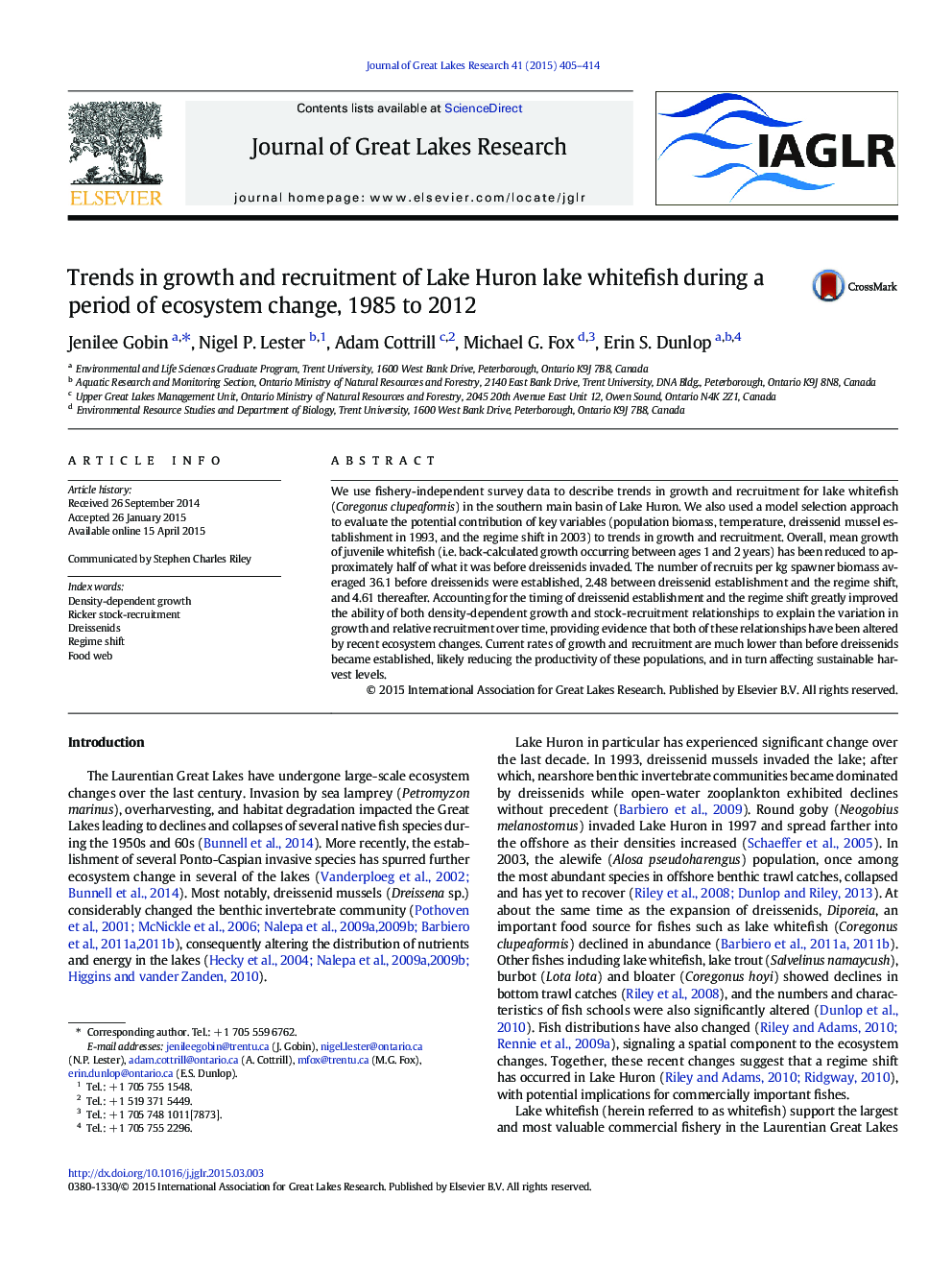| Article ID | Journal | Published Year | Pages | File Type |
|---|---|---|---|---|
| 6305001 | Journal of Great Lakes Research | 2015 | 10 Pages |
Abstract
We use fishery-independent survey data to describe trends in growth and recruitment for lake whitefish (Coregonus clupeaformis) in the southern main basin of Lake Huron. We also used a model selection approach to evaluate the potential contribution of key variables (population biomass, temperature, dreissenid mussel establishment in 1993, and the regime shift in 2003) to trends in growth and recruitment. Overall, mean growth of juvenile whitefish (i.e. back-calculated growth occurring between ages 1 and 2Â years) has been reduced to approximately half of what it was before dreissenids invaded. The number of recruits per kg spawner biomass averaged 36.1 before dreissenids were established, 2.48 between dreissenid establishment and the regime shift, and 4.61 thereafter. Accounting for the timing of dreissenid establishment and the regime shift greatly improved the ability of both density-dependent growth and stock-recruitment relationships to explain the variation in growth and relative recruitment over time, providing evidence that both of these relationships have been altered by recent ecosystem changes. Current rates of growth and recruitment are much lower than before dreissenids became established, likely reducing the productivity of these populations, and in turn affecting sustainable harvest levels.
Related Topics
Physical Sciences and Engineering
Earth and Planetary Sciences
Earth and Planetary Sciences (General)
Authors
Jenilee Gobin, Nigel P. Lester, Adam Cottrill, Michael G. Fox, Erin S. Dunlop,
